The changing face of community
11 December 2023
Swiss-Egyptian property group Orascom Development Holding has been on a transformative journey over the past three years in response to global pressures on its core markets and areas of activity.
Operating in seven countries – Egypt, Morocco, Oman, the UAE, Montenegro, Switzerland and the UK – the group develops mixed-use communities that combine residential units with social infrastructure and amenities – and, more recently, commercial office space.
It also owns 33 hotels with a total of 7,000 keys that it either self-manages or allows a third party to manage, and holds a landbank of 100 million square metres across the seven countries, of which two-thirds is yet to be developed.
Orascom Development’s model revolves around developing out-of-town locations that provide a sense of departure from urban life while remaining within reach of major cities.
Historically, much of this was keyed into second home ownership, but more recently, and particularly with the Covid-19 pandemic, shifting global attitudes to work and travel have driven the group to reorient itself to new realities.
Group CEO Omar El Hamamsy notes that at the height of the pandemic, the black swan event resulted in diverging effects on the group’s hotel and real estate businesses. While travel restrictions led to a downturn in its hotel business, the real estate business experienced an unexpected surge in demand.
Much of this surge was driven by people seeking an escape from urban environments, which boosted the appeal of the group’s lifestyle-oriented out-of-town developments. Consumer mindsets also shifted from viewing such properties as second homes to viewing them as prospective primary residences.
As El Hamamsy explains: “The purpose of those towns historically was for them to be second homes. Over time, that model has morphed into: ‘Well, hey, especially after the pandemic, should these places and towns be your primary home in the first place? Why wouldn’t you live in the Swiss Alps, an hour and a half away from Zurich, or an hour or two hours away from Milan, if you can do that?’”
This shift has created demand for commercial space within existing communities, such as at El Gouna (pictured below), the community established by the group on Egypt’s Red Sea coast near Hurghada in the ’90s.
This has led, notes El Hamamsy, into “the creation of co-working spaces – so in El Gouna, we have something called G Valley, which is our little Silicon Valley, to which we’ve attracted a whole bunch of startups. Now a bunch of digital nomads startups come in and they use those co-working spaces.”

Divesting peripherals
The group is also pivoting towards leaner operations and away from the development model it followed in the past, in which it ran everything from utilities and infrastructure to services and amenities such as schools, hospitals, marinas and leisure facilities, including even one ski resort.
El Hamamsy notes the group’s need to stay focused on its core competencies and profit centres and to disentangle itself from operational aspects.
“As part of our growth strategy, we recognise the need to transition from owning and operating everything,” he says. “This move is geared towards achieving profitable growth, enhancing customer experiences, and unlocking the stored value in our assets.
“The model over the past 30 years was incredibly capital intensive – putting a lot of money into cement and steel, into pipes underground, into schools and hospitals – so at some point, we needed to become more asset-light.
“The next step, and the one we’re doing now, is actually returning dividends to our shareholders through some de-assetisation – unlocking some of that stored value and returning it.”
In the past three years, the group’s strategic realignment has led it to post 2022 revenues that were 77 per cent higher than in 2020 and 52 per cent higher than the 2019 baseline.
Gross profit then nearly tripled from 2020 to 2022, while a 10-year net profit loss has become a two-year winning streak in 2021 and 2022, according to El Hamamsy.
There are positive projections for profitability in 2023, too.
Optimising integration
Moving forward, while all of the group’s communities are still being developed with a similar furnishing of facilities as before, a key difference is that operational partners are being brought on board from the beginning – convinced by the group’s now multinational, multi-decade track record of development.
One community under active development along these new lines is O West, a masterplan in Egypt’s 6th October City, about 40 minutes west of Cairo’s downtown.
Here, as El Hamamsy notes: “Now we’re at the maturity level where we can get out of owning and operating everything. We don’t need to generate our own electricity or do our own landscaping, necessarily. We don’t need to operate schools. In O West, we have brought in three operators for the schools, and that’s working great for us.
“And in the extension of our hospitals and wellbeing experiences, we’re bringing in third parties who specialise in certain types of wellbeing to actually build their own infrastructure and operate their own infrastructure.
“Our role, ultimately, is to curate, just like a museum curator – to say: this is the right experience for that community at this point in time.”
The group’s communities are also being designed to accommodate a broad demographic, including by incorporating affordable housing into their masterplans to ensure the entire working population can live there.
El Hamamsy emphasises the distinction between the group’s holistic approach and that of other residential developments, which – while integrating a range of different facilities and spaces – often lack functionality as fully-fledged communities.
Orascom Development’s level of community integration, on the other hand, even extends to its ownership of the El Gouna Football Club, which now sits in the Egyptian Premier League, based out of its El Gouna development.
It similarly owns an ice hockey team in connection with its community in Andermatt, Switzerland.
The group also undergirds sports and cultural events, such as the Ironman 70.3 Salalah, which centres on its Hawana Salalah community, and the El Gouna Film Festival.
And the communities keep coming. In 2022, Orascom Development welcomed residents into its first community in the UK – a lakeside village in Cornwall, while the first phase of O West in Cairo was delivered in 2023.
Despite the inflationary pressure in Egypt, the real estate market remains vibrant, according to El Hamamsy, who notes: “The opportunities in Egypt, given its low asset prices post-devaluation and favourable demographics, make it an appealing prospect for serious investors.”
Looking ahead, Orascom Development is also in the early stages of developing a major new community in Chbika in southwestern Morocco, and at Al-Sawda Island, off the southern coast of Oman – both just parts of the huge land bank that the group is yet to develop into its singular vision of urban planning.
Exclusive from Meed
-
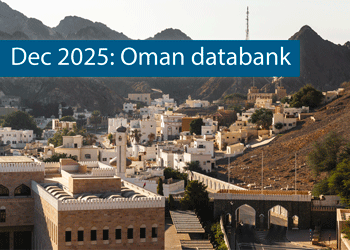 Oman’s growth forecast points upwards
Oman’s growth forecast points upwards24 December 2025
-
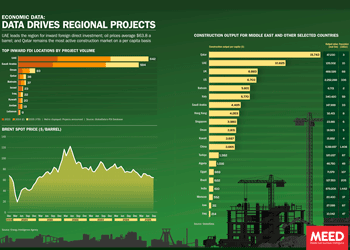 December 2025: Data drives regional projects
December 2025: Data drives regional projects23 December 2025
-
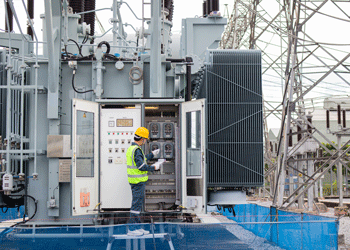 Local firm bids lowest for Kuwait substation deal
Local firm bids lowest for Kuwait substation deal22 December 2025
-
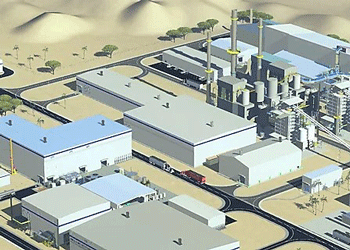 Saudi-Dutch JV awards ‘supercentre’ metals reclamation project
Saudi-Dutch JV awards ‘supercentre’ metals reclamation project22 December 2025
-
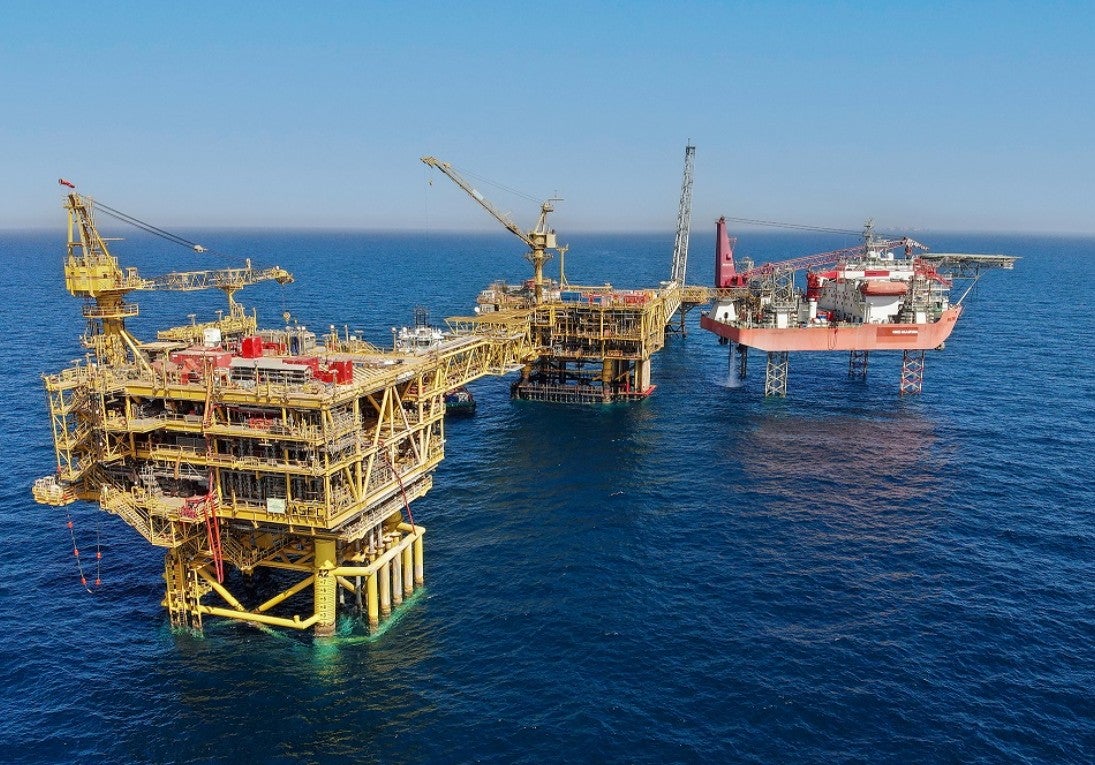 QatarEnergy LNG awards $4bn gas project package
QatarEnergy LNG awards $4bn gas project package22 December 2025
All of this is only 1% of what MEED.com has to offer
Subscribe now and unlock all the 153,671 articles on MEED.com
- All the latest news, data, and market intelligence across MENA at your fingerprints
- First-hand updates and inside information on projects, clients and competitors that matter to you
- 20 years' archive of information, data, and news for you to access at your convenience
- Strategize to succeed and minimise risks with timely analysis of current and future market trends

Related Articles
-
 Oman’s growth forecast points upwards
Oman’s growth forecast points upwards24 December 2025

MEED’s January 2026 report on Oman includes:
> COMMENT: Oman steadies growth with strategic restraint
> GVT & ECONOMY: Oman pursues diversification amid regional concerns
> BANKING: Oman banks feel impact of stronger economy
> OIL & GAS: LNG goals galvanise Oman’s oil and gas sector
> POWER & WATER: Oman prepares for a wave of IPP awards
> CONSTRUCTION: Momentum builds in construction sectorTo see previous issues of MEED Business Review, please click herehttps://image.digitalinsightresearch.in/uploads/NewsArticle/15306449/main.gif -
 December 2025: Data drives regional projects
December 2025: Data drives regional projects23 December 2025
Click here to download the PDF
Includes: Top inward FDI locations by project volume | Brent spot price | Construction output
MEED’s January 2026 report on Oman includes:
> COMMENT: Oman steadies growth with strategic restraint
> ECONOMY: Oman pursues diversification amid regional concerns
> BANKING: Oman banks feel impact of stronger economy
> OIL & GAS: LNG goals galvanise Oman’s oil and gas sector
> POWER & WATER: Oman prepares for a wave of IPP awards
> CONSTRUCTION: Momentum builds in construction sectorTo see previous issues of MEED Business Review, please click herehttps://image.digitalinsightresearch.in/uploads/NewsArticle/15306140/main.gif -
 Local firm bids lowest for Kuwait substation deal
Local firm bids lowest for Kuwait substation deal22 December 2025
The local Al-Ahleia Switchgear Company has submitted the lowest price of KD33.9m ($110.3m) for a contract to build a 400/132/11 kV substation at the South Surra township for Kuwait’s Public Authority for Housing Welfare (PAHW).
The bid was marginally lower than the two other offers of KD35.1m and KD35.5m submitted respectively by Saudi Arabia’s National Contracting Company (NCC) and India’s Larsen & Toubro.
PAHW is expected to take about three months to evaluate the prices before selecting the successful contractor.
The project is one of several transmission and distribution projects either out to bid or recently awarded by Kuwait’s main affordable housing client.
This year alone, it has awarded two contracts worth more than $100m for cable works at its 1Z, 2Z, 3Z and 4Z 400kV substations at Al-Istiqlal City, and two deals totalling just under $280m for the construction of seven 132/11kV substations in the same township.
Most recently, it has tendered two contracts to build seven 132/11kV main substations at its affordable housing project, west of Kuwait City. The bid deadline for the two deals covering the MS-01 through to MS-08 substations is 8 January.
https://image.digitalinsightresearch.in/uploads/NewsArticle/15305745/main.gif -
 Saudi-Dutch JV awards ‘supercentre’ metals reclamation project
Saudi-Dutch JV awards ‘supercentre’ metals reclamation project22 December 2025
The local Advanced Circular Materials Company (ACMC), a joint venture of the Netherlands-based Shell & AMG Recycling BV (SARBV) and local firm United Company for Industry (UCI), has awarded the engineering, procurement and construction (EPC) contract for the first phase of its $500m-plus metals reclamation complex in Jubail.
The contract, estimated to be worth in excess of $200m, was won by China TianChen Engineering Corporation (TCC), a subsidiary of China National Chemical Engineering Company (CNCEC), following the issue of the tender in July 2024.
Under the terms of the deal, TCC will process gasification ash generated at Saudi Aramco’s Jizan refining complex on the Red Sea coast to produce battery-grade vanadium oxide and vanadium electrolyte for vanadium redox flow batteries. AMG will provide the licensed technology required for the production process.
The works are the first of four planned phases at the catalyst and gasification ash recycling ‘Supercentre’, which is located at the PlasChem Park in Jubail Industrial City 2 alongside the Sadara integrated refining and petrochemical complex.
Phase 2 will expand the facility to process spent catalysts from heavy oil upgrading facilities to produce ferrovanadium for the steel industry and/or additional battery-grade vanadium oxide.
Phase 3 involves installing a manufacturing facility for residue-upgrading catalysts.
In the fourth phase, a vanadium electrolyte production plant will be developed.
The developers expect a total reduction of 3.6 million metric tonnes of carbon dioxide emissions a year when the four phases of the project are commissioned.
SARBV first announced its intention to build a metal reclamation and catalyst manufacturing facility in Saudi Arabia in November 2019. The kingdom’s Ministry of Investment, then known as the Saudi Arabian General Investment Authority (Sagia), supported the project.
In July 2022, SARBV and UCI signed the agreement to formalise their joint venture and build the proposed facility.
The project has received support from Saudi Aramco’s Namaat industrial investment programme. Aramco, at the time, also signed an agreement with the joint venture to offtake vanadium-bearing gasification ash from its Jizan refining complex.
Photo credit: SARBV
https://image.digitalinsightresearch.in/uploads/NewsArticle/15305326/main.gif -
 QatarEnergy LNG awards $4bn gas project package
QatarEnergy LNG awards $4bn gas project package22 December 2025
QatarEnergy LNG, a subsidiary of state-owned QatarEnergy, has awarded the main engineering, procurement, construction and installation (EPCI) contract for a major package for the second phase of its North Field Production Sustainability (NFPS) project.A consortium comprising the Italian contractor Saipem and state-owned China Offshore Oil Engineering Company (COOEC) has secured the EPCI contract for the COMP5 package. The contract value is $4bn, with Saipem declaring its share to be worth $3.1bn.
Milan-headquartered Saipem said the contract will run for about five years. The scope of work comprises engineering, procurement, fabrication and installation of two compression complexes, each including a compression platform, a living quarters platform, a flare platform supporting the gas combustion system, and the related interconnecting bridges. Each complex will have a total weight of about 68,000 tonnes.
Offshore installation operations will be carried out by Saipem’s De He construction vessel in 2029 and 2030.
MEED previously reported that the following contractors submitted bids for the NFPS phase two COMP5 package:
- Larsen & Toubro Energy Hydrocarbon (India)
- McDermott (US)
- Saipem/China Offshore Oil Engineering Company (Italy/China)
QatarEnergy LNG, formerly Qatargas, is said to have issued the tender for the NFPS phase two COMP5 package in the first quarter of the year.
Contractors submitted technical bids for the COMP5 package in late June, while commercial bids were submitted by 8 October, as per sources.
Based upon initial evaluation of bids by QatarEnergy LNG, L&TEH has emerged as the lowest bidder for the COMP5 package, followed by McDermott, with the consortium of Saipem and COOEC in third place, MEED reported in late October.
In the weeks following that, the project operator is said to have engaged all bidders for a final round of negotiations, during which the consortium of Saipem and COOEC is believed to have “clinched the deal”, according to sources.
The detailed scope of work on the COMP5 package covers the EPCI work on the following:
- Two gas compression platforms, each weighing 30,000-35,000 tonnes, plus jacket
- Two living quarters platforms, plus jacket
- Two gas flare platforms, plus jacket
- Brownfield modification work at two complexes
NFPS scheme
QatarEnergy’s North Field liquefied natural gas (LNG) expansion programme requires the state enterprise to pump large volumes of gas from the North Field offshore reserve to feed the three phases of the estimated $40bn-plus programme.
QatarEnergy has already invested billions of dollars in engineering, procurement and construction works on the two phases of the NFPS project, which aims to maintain steady gas feedstock for the North Field LNG expansion phases.
The second NFPS phase will mainly involve building gas compression facilities to sustain and gradually increase gas production from Qatar’s offshore North Field gas reserve over the long term.
Saipem has been the most successful contractor on the second NFPS phase, securing work worth a total of $8.5bn.
QatarEnergy LNG awarded Saipem a $4.5bn order in October 2022 to build and install gas compression facilities. The main scope of work on the package, which is known as EPCI 2, covers two large gas compression complexes that will comprise decks, jackets, topsides, interconnecting bridges, flare platforms, living quarters and interface modules.
The gas compression complexes – CP65 and CP75 – will weigh 62,000 tonnes and 63,000 tonnes, respectively, and will be the largest fixed steel jacket compression platforms ever built.
Following that, Saipem won combined packages COMP3A and COMP3B of the NFPS project’s second phase in September last year.
The scope of work on the combined packages encompasses the EPCI of a total of six platforms, approximately 100 kilometres (km) of corrosion resistance alloy rigid subsea pipelines of 28-inches and 24-inches diameter, 100km of subsea composite cables, 150km of fibre optic cables and several other subsea units.
Separately, QatarEnergy LNG awarded McDermott the contract for the NFPS second phase package known as EPCI 1, or COMP1, in July 2023. The scope of work on the estimated $1bn-plus contract is to install a subsea gas pipeline network at the North Field gas development.
In March this year, India’s Larsen & Toubro Energy Hydrocarbon (LTEH) won the main contract for the combined 4A and 4B package, which is the fourth package of the second phase of the NFPS project and is estimated to be valued at $4bn-$5bn.
The main scope of work on the package is the EPCI of two large gas compression systems that will be known as CP8S and CP4N, each weighing 25,000-35,000 tonnes. The contract scope also includes compression platforms, flare gas platforms and other associated structures.
LTHE sub-contracted detailed engineering and design works on the combined 4A and 4B package to French contractor Technip Energies.
NFPS first phase
Saipem is also executing the EPCI works on the entire first phase of the NFPS project, which consists of two main packages.
Through the first phase of the NFPS scheme, QatarEnergy LNG aims to increase the early gas field production capacity of the North Field offshore development to 110 million tonnes a year.
QatarEnergy LNG awarded Saipem the contract for the EPCI package in February 2021. The package is the larger of the two NFPS phase one packages and has a value of $1.7bn.
Saipem’s scope of work on the EPCI package encompasses building several offshore facilities for extracting and transporting natural gas, including platforms, supporting and connecting structures, subsea cables and anti-corrosion internally clad pipelines.
The scope of work also includes decommissioning a pipeline and other significant modifications to existing offshore facilities.
In addition, in April 2021, QatarEnergy LNG awarded Saipem two options for additional work within the EPCI package, worth about $350m.
QatarEnergy LNG awarded Saipem the second package of the NFPS phase one project, estimated to be worth $1bn, in March 2021.
Saipem’s scope of work on the package, which is known as EPCL, mainly covers installing three offshore export trunklines running almost 300km from their respective offshore platforms to the QatarEnergy LNG north and south plants located in Ras Laffan Industrial City.
Saipem performed the front-end engineering and design work on the main production package of the first phase of the NFPS as part of a $20m contract that it was awarded in January 2019. This provided a competitive advantage to the Italian contractor in its bid to win the package.
https://image.digitalinsightresearch.in/uploads/NewsArticle/15305330/main2239.jpg

